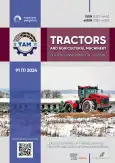The individual tubular low-toxic combustion chamber
- 作者: Kostyukov A.V.1, Valeev A.G.2, Dementiev A.A.2
-
隶属关系:
- Central Scientific and Research Automobile and Automotive Engines Institute NAMI
- Moscow Polytechnic University
- 期: 卷 91, 编号 1 (2024)
- 页面: 13-22
- 栏目: Environmentally friendly technologies and equipment
- URL: https://bakhtiniada.ru/0321-4443/article/view/260266
- DOI: https://doi.org/10.17816/0321-4443-627164
- ID: 260266
如何引用文章
详细
BACKGROUND: intensive works in improvement and development of microturbine power plants for energy and transport continues worldwide. These works are still relevant due to near-to-zero emissions of microturbines, as well as due to the fact that microturbines efficiency can be increased up to 50% and above, which opens the potential to compete with well-known power plants in the foreseeable future, including in terms of efficiency. Therefore, the work on the study of a low-toxic combustion chamber for a microturbine seems relevant as well.
AIM: Сomputational and experimental study of an individual tubular low-toxic combustion chamber of a 50 kW microturbine with an increase in pressure at the inlet to the chamber.
METHODS: The description of the experimental facility for combustion chamber testing and the results of its experimental study are given. A sufficient convergence of the experimentally obtained parameters of the combustion chamber with the parameters obtained from the simulation modeling of flow and combustion in the combustion chamber was obtained.
RESULTS: In the course of the calculated and full-scale studies, hydraulic losses, nitrogen oxide emissions, and temperature unevenness at the outlet of the combustion chamber with increasing air pressure at its inlet were determined.
CONCLUSIONS: The calculated study showed a significant effect of an increase in air pressure from 3 to 3.5 bar at the entrance to the combustion chamber on its main parameters. Thus, hydraulic losses have more than doubled and nitrogen oxide emissions have increased almost 1.3 times. The conducted experimental study of the combustion chamber generally confirmed the results of mathematical modeling and thereby tested the computational model used. Thus, the discrepancy in the experimentally and computationally obtained values of relative pressure losses in the combustion chamber does not exceed 15%, and in emissions of nitrogen oxides 7%.
作者简介
Andrey Kostyukov
Central Scientific and Research Automobile and Automotive Engines Institute NAMI
Email: kostukov123@yandex.ru
ORCID iD: 0009-0005-5137-7259
Cand. Sci. (Engineering), Main Specialist of the Alternative Engines Department
俄罗斯联邦, MoscowAnton Valeev
Moscow Polytechnic University
Email: valeevanton@gmail.com
ORCID iD: 0009-0005-7067-1269
Assistant of the Power Plants for Transport and Small Energy Department
俄罗斯联邦, 38 Bolshaya Semenovskaya street, 107023 MoscowAlexander Dementiev
Moscow Polytechnic University
编辑信件的主要联系方式.
Email: w1941w@yandex.ru
ORCID iD: 0009-0001-2311-0849
SPIN 代码: 7826-5560
Associate Professor of the Power Plants for Transport and Small Energy Department
俄罗斯联邦, 38 Bolshaya Semenovskaya street, 107023 Moscow参考
- Teng SY, Máša V. New insights into the potential of the gas microturbine in microgrids and industrial applications. Renewable and Sustainable Energy Reviews. 2020;134. doi: 10.1016/j.rser.2020.110078
- Benini E. Progress in Gas Turbine Performance. University of Padua: InTech Open. 2013:270.
- Matveev S, Abrashkin V, Orlov M, et al. Development of an algorithm for design calculation of a combustion chamber for a microturbine power plant. Bulletin of the Samara State Aerospace University. 2013;3(41):146–155. (In Russ).
- Kostyukov A, Karpukhin K, Nadareishvili G. Design Features when Using an Effective Microturbine as a Range Extending Engine. Science and Technique. 2018;18(6):447–460. doi: 10.21122/2227-1031-2019-18-6-447-460
- Karpukhin K, Terenchenko A, Kolbasov A, et al. The use of microturbines as an energy converter for motor transport. International Journal of Innovative Technology and Exploring Engineering. 2019:8(10):2700-2703. doi: 10.35940/ijitee.J9451.0881019
- Mnogotselevye malogabaritnye gazoturbinnye dvigateli (mikroturbiny) so sverkhvysokoy ste-penyu regeneratsii. Otchet. Etap 1. Moskva 2015. Gosudarstvennyy registratsionnyy nomer № 1027700140192. 2015. (In Russ).
- Gornovskii A, Valeev A, Kosach L, et al. Optimization and tuning of a low-toxic combustion chamber using numerical modeling of combustion chamber processes. Izvestiya MGTU MAMI. 2017;3(33):14–20. (In Russ).
- Gornovskii A, Valeev A, Kostyukov A. Designing combustion chamber based on RQL concept. Naukograd Scientific and social journal. 2017:2:73–76. (In Russ).
- Menter F. Two-equation eddy-viscosity turbulence models for engineering applications. AIAA Journal. 1994.
- Menter F, Carregal Ferreira J, Esch T, et al. The SST turbulence model with improved wall treatment for heat transfer predictions in gas turbines. In: Proceedings of the international gas turbine congress. Tokyo, November 2–7, 2003. Tokio: Nippon Foundation, 2003. [cited: 28.12.2023] Available from: https://nippon.zaidan.info/seikabutsu/2003/00916/pdf/igtc2003tokyo_ts059.pdf
- Muller CM, Breitbach H, Peters N. Partially premixed turbulent flame propagation in jet flames. In: Symposium (International) on Combustion. 1994;25(1):1099–1106. doi: 10.1016/S0082-0784(06)80747-2
- Pitsch H, Chen M, Peters N. Unsteady flamelet modeling of turbulent hydrogen-air diffusion flames. In: 27th Symposium (International) on combustion. The combustion institute. 1998;27(1):1057–1064. doi: 10.1016/S0082-0784(98)80506-7
- Pitsch H, Peters N. A consistent flamelet formulation for non-premixed combustion considering differ-ential diffusion effects. Combustion and flame. 1998;114:26–40.
补充文件














